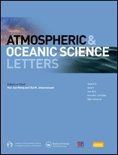
Atmospheric and Oceanic Science Letters
Scope & Guideline
Connecting Global Insights on Climate and Ocean Dynamics
Introduction
Aims and Scopes
- Climate Change and Variability:
Research in this area focuses on the impacts of climate change on various regions, including temperature variations, precipitation patterns, and extreme weather events, utilizing both historical data and predictive modeling. - Atmospheric Dynamics and Processes:
This scope encompasses studies on atmospheric circulation patterns, teleconnections, and their influence on regional climates, including the analysis of phenomena such as monsoons and cyclones. - Hydrological Cycle and Water Resources:
The journal covers research related to hydrological processes, including precipitation, evaporation, and water availability, particularly in relation to climate change and human activities. - Remote Sensing and Climate Modeling:
Utilizing advanced modeling techniques and remote sensing data, this area investigates atmospheric and oceanic phenomena, including the evaluation of climate models like CMIP6 and satellite observations. - Pollution and Environmental Impact:
Studies in this category focus on the effects of atmospheric pollutants, including PM2.5 and greenhouse gases, on climate and human health, as well as the impact of urbanization on local climates. - Tibetan Plateau and Regional Climate Studies:
Given its unique geographical and climatic features, the Tibetan Plateau is a focal point for research on its influence on regional and global climate systems.
Trending and Emerging
- Machine Learning and Data Science Applications:
There is a growing trend towards employing machine learning techniques to improve climate predictions, analyze complex datasets, and enhance forecasting accuracy, indicating a significant shift towards data-driven research. - Impact of Urbanization on Climate:
Increasingly, studies are focusing on how urbanization affects local climates, particularly in terms of heat extremes, air quality, and hydrological responses, highlighting the intersection of urban development and environmental science. - Climate Extremes and Resilience:
Research on extreme weather events and their societal impacts has surged, reflecting an urgent need to understand and mitigate the risks associated with climate variability and extremes. - Integrated Climate Change Adaptation Strategies:
Emerging studies emphasize the development of comprehensive strategies for climate change adaptation, focusing on resilience in vulnerable regions, particularly in light of recent extreme weather events. - Teleconnection Studies and Global Climate Interactions:
There is an increasing interest in understanding the teleconnections between different climatic systems, especially how phenomena in one region can impact weather patterns in distant areas, emphasizing global interdependencies.
Declining or Waning
- Historical Climate Analysis:
Although historical climate studies remain important, there has been a noticeable reduction in papers focused solely on retrospective analyses compared to the growing emphasis on predictive modeling and climate change impacts. - Local Climate Phenomena:
Research specifically targeting localized weather events or phenomena has decreased as the journal shifts towards broader regional or global climate studies, which may be driven by the need for comprehensive understanding of climate systems. - Traditional Statistical Methods:
The use of classical statistical approaches for climate data analysis is declining as newer methodologies, particularly machine learning and advanced modeling techniques, gain prominence in climate research.
Similar Journals

JOURNAL OF GEOPHYSICAL RESEARCH-ATMOSPHERES
Fostering a deeper understanding of climate and atmosphere.JOURNAL OF GEOPHYSICAL RESEARCH-ATMOSPHERES, published by the American Geophysical Union, is a leading peer-reviewed journal dedicated to advancing our understanding of atmospheric science and related disciplines. With an impressive impact factor and consistently holding a Q1 ranking across key categories including Atmospheric Science and Geophysics, this esteemed journal caters to a global audience of researchers, professionals, and students eager to explore groundbreaking studies and insights. The journal covers a comprehensive scope of topics, from climate dynamics to atmospheric processes, enhancing knowledge and informing practices within the realm of Earth and Planetary Sciences. With its strong emphasis on quality research, it remains a vital resource for those engaged in unraveling the complexities of our planet’s atmosphere. Explore this journal to stay abreast of significant developments and foster a deeper understanding in this ever-evolving field.

IZVESTIYA ATMOSPHERIC AND OCEANIC PHYSICS
Innovating research for a sustainable environmental future.Izvestiya Atmospheric and Oceanic Physics is a distinguished journal dedicated to advancing the fields of atmospheric science and oceanography, published by MAIK Nauka/Interperiodica/Springer. With a rich publication history spanning from 1972 to the present, this journal serves as a vital platform for both theoretical and experimental studies that enhance our understanding of complex atmospheric and oceanic systems. Despite its current categorization in the Q4 quartile according to the 2023 rankings, the journal continues to provide crucial insights, as evidenced by its established ranks in Scopus—placing it in the 15th and 26th percentiles of its respective categories. Researchers, professionals, and students alike are encouraged to contribute to and engage with the latest findings published in this journal, fostering a collaborative spirit within the scientific community dedicated to tackling pressing environmental challenges.

Tethys-Journal of Mediterranean Meteorology & Climatology
Illuminating the Complexities of Mediterranean ClimatologyTethys - Journal of Mediterranean Meteorology & Climatology, published by the Associació Catalana de Meteorologia (ACAM), serves as a specialized platform dedicated to advancing the study of meteorological and climatological phenomena within the Mediterranean region. With a Scopus Rank of #94 out of 148 in the field of Atmospheric Science, this journal is positioned in the Q4 category, reflecting a growing recognition among researchers focused on regional climate variations and environmental challenges. Established in 2012 and publishing through 2023, Tethys aims to provide open access to high-quality research articles that address critical issues impacting climate and weather patterns, thus contributing to a deeper understanding of Mediterranean meteorology. The journal’s mission aligns closely with the increasing global emphasis on climate studies and serves as an essential resource for academics, practitioners, and students dedicated to sustainably addressing the environmental and climatic challenges faced by this diverse and dynamic region.
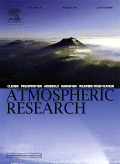
Atmospheric Research
Connecting Science and Climate for a Better TomorrowAtmospheric Research is a premier journal published by Elsevier Science Inc, specializing in the field of Atmospheric Science. With a commendable impact factor, it holds a distinguished position in the Scopus rankings, being placed 14th out of 148 journals within its category and achieving a remarkable 90th percentile rank. This journal serves as a vital outlet for rigorous research on atmospheric processes, climate variability, and meteorological phenomena, providing a platform for scientists, researchers, and students to disseminate their findings and contribute to the advancement of knowledge in this critical field. Although it is not an open-access journal, its strong reputation and selective publication criteria ensure that only high-quality and impactful studies are featured. Since its inception in 1986, Atmospheric Research has continuously evolved to meet the dynamic nature of atmospheric studies, making it a fundamental resource for anyone engaged in understanding and addressing atmospheric challenges worldwide.
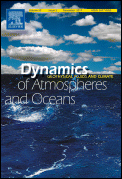
DYNAMICS OF ATMOSPHERES AND OCEANS
Navigating the Complexities of Earth's SystemsDYNAMICS OF ATMOSPHERES AND OCEANS, published by Elsevier, is a renowned journal that has established itself as a vital resource in the fields of atmospheric science, oceanography, and geology. With a rich publication history stretching from 1976 to 2024, this journal provides a platform for high-quality research that addresses the complex interactions between the atmosphere and oceans, which are critical to understanding climate change and environmental systems. It enjoys a respectable impact factor and a reputable position within its category quartiles, specifically noted as Q2 in critical domains such as Computers in Earth Sciences and Oceanography. Researchers and professionals benefit from its indexed coverage, featuring a Scopus ranking that places it among the leading journals in its categories. Although it is not an open-access journal, readers can access its cutting-edge articles through institutional subscriptions or individual purchases. The journal aims to foster cross-disciplinary dialogue and innovation by publishing original research, reviews, and insightful commentary, making it a cornerstone for scholars, students, and practitioners committed to advancing knowledge in the dynamic interplay of Earth's atmospheric and oceanic systems.

Asia-Pacific Journal of Atmospheric Sciences
Advancing Knowledge in Meteorology and ClimatologyWelcome to the Asia-Pacific Journal of Atmospheric Sciences, a leading publication in the field of atmospheric science, published by the Korean Meteorological Society. With an ISSN of 1976-7633 and an E-ISSN of 1976-7951, this journal has been a cornerstone for researchers and practitioners in the atmospheric sciences since its inception in 2008. Recognized for its rigorous peer-reviewed articles, it holds a commendable Q2 quartile ranking in 2023 and is placed at the 51st rank out of 148 in the Earth and Planetary Sciences, reflecting its impact within the community with a 65th percentile. The journal features a broad scope encompassing meteorology, climatology, and environmental sciences, making it an essential resource for scholars and industry experts alike. As an open access journal, it ensures that groundbreaking research is widely accessible, fostering collaboration and innovation across the Asia-Pacific region and beyond. Explore the latest findings and advancements in atmospheric sciences and contribute to the dynamic field of climate research through the journal's engaging content.
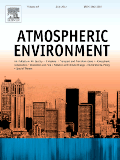
ATMOSPHERIC ENVIRONMENT
Innovating research to tackle today’s atmospheric challenges.ATMOSPHERIC ENVIRONMENT is a premier journal dedicated to advancing the field of atmospheric science and environmental studies, published by Pergamon-Elsevier Science Ltd in the United Kingdom. With an impressive impact factor and recent rankings placing it in the Q2 quartile for Atmospheric Science and Q1 for miscellaneous Environmental Science, it stands as a leading source of high-quality research articles that bridge the gap between atmospheric phenomena and environmental issues. The journal, which has been disseminating significant findings since its inception in 1972, emphasizes an interdisciplinary approach, inviting contributions that address the pivotal challenges facing our atmosphere today. Although it does not currently offer open access options, the journal remains accessible through various academic platforms, ensuring that the latest research reaches its vast audience of researchers, professionals, and students who are striving to deepen their understanding of atmospheric processes. With a robust scope that encompasses a range of topics from climate change to air quality management, ATMOSPHERIC ENVIRONMENT is essential reading for anyone committed to fostering sustainable environmental practices and innovative scientific research.

METEOROLOGY AND ATMOSPHERIC PHYSICS
Exploring the Dynamics of Weather and ClimateMETEOROLOGY AND ATMOSPHERIC PHYSICS is a premier journal published by SPRINGER WIEN, dedicated to advancing the study of atmospheric phenomena and weather-related sciences. With an ISSN of 0177-7971 and an E-ISSN of 1436-5065, the journal has established itself as an important contributor in the field, particularly noted for its contributions in atmospheric science, holding a Q3 ranking in the 2023 category quartiles. Covering a wide array of topics from meteorological modeling to the physics of the atmosphere, it serves researchers, professionals, and students alike, facilitating the dissemination of significant findings and innovative research. The journal’s acceptance of articles until 2024 encourages a continuous influx of knowledge, and despite its lack of Open Access, it plays a crucial role in enriching the academic landscape for those engaged in Earth and planetary sciences, holding a commendable rank of 78 out of 148 in Scopus. Located in the scenic city of Vienna, Austria, the journal is positioned to harness the vibrancy of the academic community, providing a platform for valuable insights that can drive forward the field of meteorology and atmospheric physics.
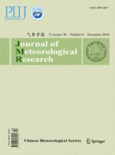
Journal of Meteorological Research
Navigating the Future of Weather Science.The Journal of Meteorological Research, published by SPRINGER HEIDELBERG, stands as a vital resource in the fields of Atmospheric Science and Ocean Engineering, boasting an impressive impact factor that reflects its scholarly significance. With its ISSN 2095-6037 and E-ISSN 2198-0934, the journal offers an open access platform, fostering accessibility and dissemination of cutting-edge research. Established in 2014 and running through to 2024, it is particularly distinguished in 2023 as Q2 in Atmospheric Science and Q1 in Ocean Engineering, underscoring its important contributions to these disciplines, with remarkable rankings in Scopus that place it in the top tiers of both categories. The journal accepts a broad range of research articles, reviews, and innovative methodologies, catering to a diverse audience of researchers, professionals, and students eager to advance their knowledge and expertise in meteorological studies. This makes the Journal of Meteorological Research an essential platform for anyone engaged in understanding and addressing the complex challenges of our changing climate.
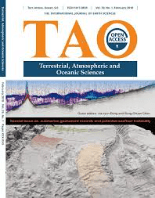
TERRESTRIAL ATMOSPHERIC AND OCEANIC SCIENCES
Transforming Insights into Actionable KnowledgeTERRESTRIAL ATMOSPHERIC AND OCEANIC SCIENCES, published by SpringerNature, is a distinguished peer-reviewed journal that has been an essential platform for innovative research in the fields of atmospheric science, oceanography, and Earth and planetary sciences since its inception. With an Open Access policy established in 1990, the journal ensures wide dissemination of knowledge, allowing researchers, professionals, and students to access cutting-edge findings without restrictions. Based in Switzerland and featuring a comprehensive coverage from 1996 to 2024, the journal currently holds a Q3 ranking across various categories, indicating its growing significance in the scientific community. Although it is positioned within the 39th percentile in Earth and Planetary Sciences, its commitment to fostering high-quality research makes it a valuable resource for advancing understanding of terrestrial environments and their interconnections. Researchers seeking a platform for their work in atmospheric and oceanic sciences will find TERRESTRIAL ATMOSPHERIC AND OCEANIC SCIENCES to be an ideal venue for sharing their insights with a global audience.